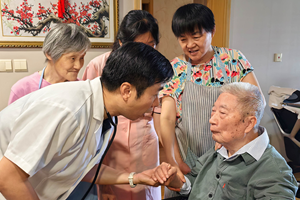A recent paper by a research team including Stanford health economist Karen Eggleston explores challenges and opportunities digital health technologies present in South and Southeast Asia, offering evidence-based recommendations for shaping effective strategies in low- and middle-income countries (LMICs).
Advancements in digital health, such as telemedicine, personalized nudges, and AI models, present new possibilities for addressing persistent problems in healthcare access, cost, and quality. However, effective strategies are needed to ensure these innovations benefit underserved populations.
Published in the Journal of Medical Internet Research, the paper provides an analytic framework for evaluating digital health innovations, focusing on LMICs in South and Southeast Asia. The authors, including experts from institutions like Stanford, the National University of Singapore, and India’s National Health Authority, advocate for tailoring digital solutions to diverse contexts.
Human-in-the-Loop Approaches
The co-authors highlight the benefits of a “human-in-the-loop” approach, integrating human expertise into AI systems. They propose a “researcher-in-the-loop” model to adapt innovations to LMIC contexts, an idea born during an Asia Health Policy Program (AHPP) panel discussion in October 2023. This collaborative approach ensures that digital health solutions remain responsive to local needs and challenges.
Building Social Value
Digital health implementation must address local needs and infrastructure gaps. The co-authors recommend a dual approach:
- Top-Down Strategy: Design and scale national digital health infrastructures.
- Bottom-Up Ecosystem: Foster local experiments to generate shared experiences.
This approach enables economies to leapfrog towards resilient, context-specific health systems. Benefits depend on equitable implementation tailored to local conditions.
Integrated Solutions
The paper emphasizes robust digital health infrastructures with adaptable data systems, interoperability, and stringent privacy standards. India’s Ayushman Bharat Digital Mission exemplifies effective data management supporting personalized care. However, challenges like varying data standards and ethical concerns persist. Regulations such as Singapore’s Personal Data Protection Act play a vital role in building trust.
Mobile health (mHealth) and AI applications show promise in bridging access gaps. Initiatives in India and Cambodia leveraging low-cost smartphones have improved maternal and child health outcomes. AI-driven tools, such as Thailand’s diabetic retinopathy screening program, enable real-time diagnostics in low-resource settings. These innovations reduce dependence on physical infrastructure and trained personnel, expanding healthcare access.
Despite advancements, risks like misinformation and data privacy remain. Clear guidelines are essential to safeguard sensitive information and uphold public trust.
Local Partnerships
Interdisciplinary collaboration is crucial for culturally sensitive, need-driven interventions. Community engagement ensures digital innovations bridge gaps and improve accessibility. Examples include NGO Noora Health, which enhances caregiver training in India, Bangladesh, and Indonesia through mobile and digital tools. These programs leverage local expertise and partnerships with governments and health workers to amplify their impact.
Local champions and partnerships provide cultural context, advocate adoption, and maximize the benefits of digital technologies. They can help scale solutions and ensure they address community-specific challenges effectively.
By Noa Ronkin










